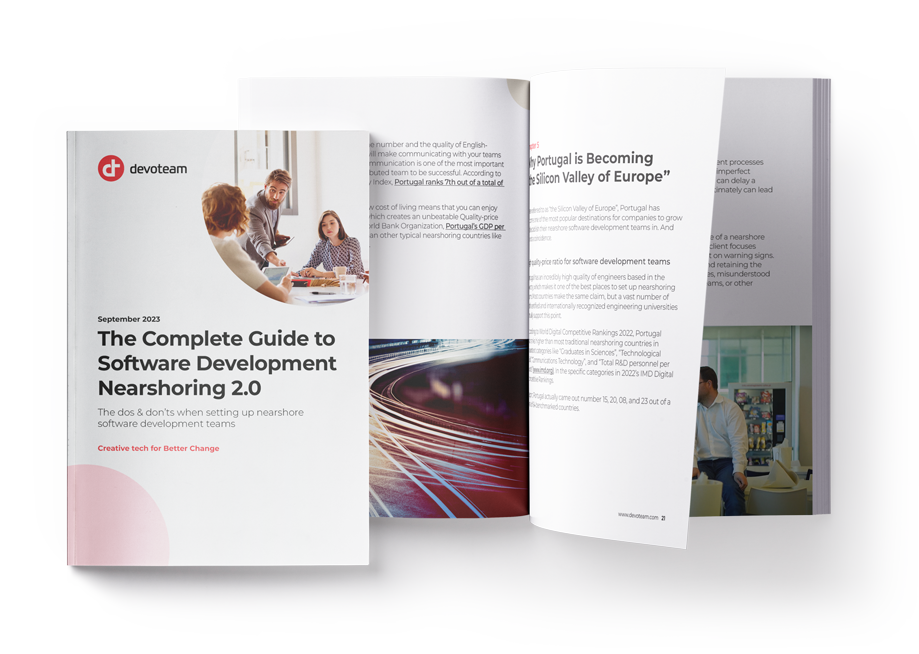In this day and age, the eagerness of an organisation to adapt and innovate is the most feasible predictor of its own success. Now, more than ever, the payback of being first to do the right thing, the right way, is significant. Alongside a precise sense of direction, the effective speed of an organisation’s Agility Cycle will always be a foundational element for a successful long-term endeavour.
In this article we will go through some key definitions and explore the impact/role of Nearshore in the agility of an organisation.
A NEARSHORE DEVELOPMENT TEAM TO AVOID AGILITY DEBT
An organisation not focused on speeding up its Agility Cycle will start to accumulate “Agility Debt” – a compounding gravitational lag and another hurdle to overtake on the continuous time-to-market race for innovation.
“Agility Debt” is the price you pay for not being fast enough, an opportunity cost. It essentially consumes time, resources and energy-draining a company of its ability to innovate and grow i.e., to survive. The challenge is to find the right balance between speed, quality, savings and goodwill.
IT NEARSHORING AS A MAIN TALENT SOURCING STRATEGY
Several layers must be considered when throttling the Agility Cycle and a solid Talent Sourcing Strategy will always be its cornerstone. As Innovation dynamics evolve, so does the way talent is sourced, favouring closer sourcing locations. Remote locations with large talent pools at low cost are no longer interesting for strategic innovation initiatives.
To define the best Talent Sourcing Strategy, organisations must consider 4 major intertwined factors:
- Digital Strategy – transformational, a journey to be done close to business;
- Delivery Model – efficient and iterative, favouring real-time interactions;
- Skillset – making sure to adapt talent pools with the new demand;
- Socio-political Context – stable, granting the cultural match needed to endure.
Furthermore, an organisation’s Digital Agenda (from Automation to Agile Methods, or Big Data and Cloud Strategy) must always be aligned with the right Talent Sourcing Strategy and location, focusing on:
- Balancing speed /agility with cost and scale
- Favouring direct real-time interaction between teams
- Bridging cultural idiosyncrasies
- Matching technological landscapes/vendor regions
IT Nearshore Europe
Modern organisations must nourish a strong ecosystem of partners, culturally aligned and with similar work ethic. Adopting a Nearshore approach will allow organisations to rely on closely located partnerships, granting several direct benefits, such as:
- Proximity
- Shared culture and language
- Aligned time zones for work and agility
- Better financial rationales
- Proximity for face-to-face sessions
Key takeaways
To effectively innovate, organisations must adopt efficient innovation processes and the right delivery models. Critical to ensuring a fast pace for this, is partnering with the right suppliers. Adopting a Nearshore Service Model acting as both a catalyst and agent for innovation, will structure the approach and ease the pathway to transformation.
In Portugal, there is a lot of talent and there are many companies that need this kind of service. With experience in Nearshore since 2012, Devoteam is ready to support your company to scale your team and reach your goals, get to know our Nearshore offer.

Do you want to know more about the dos & don’ts when setting up nearshore software development teams?
